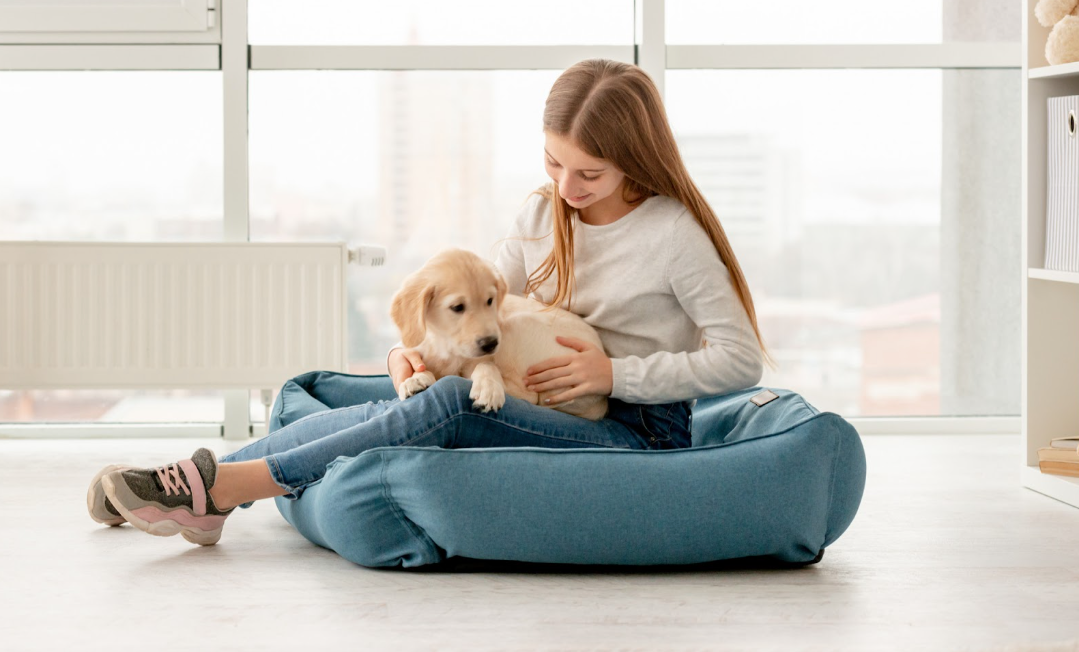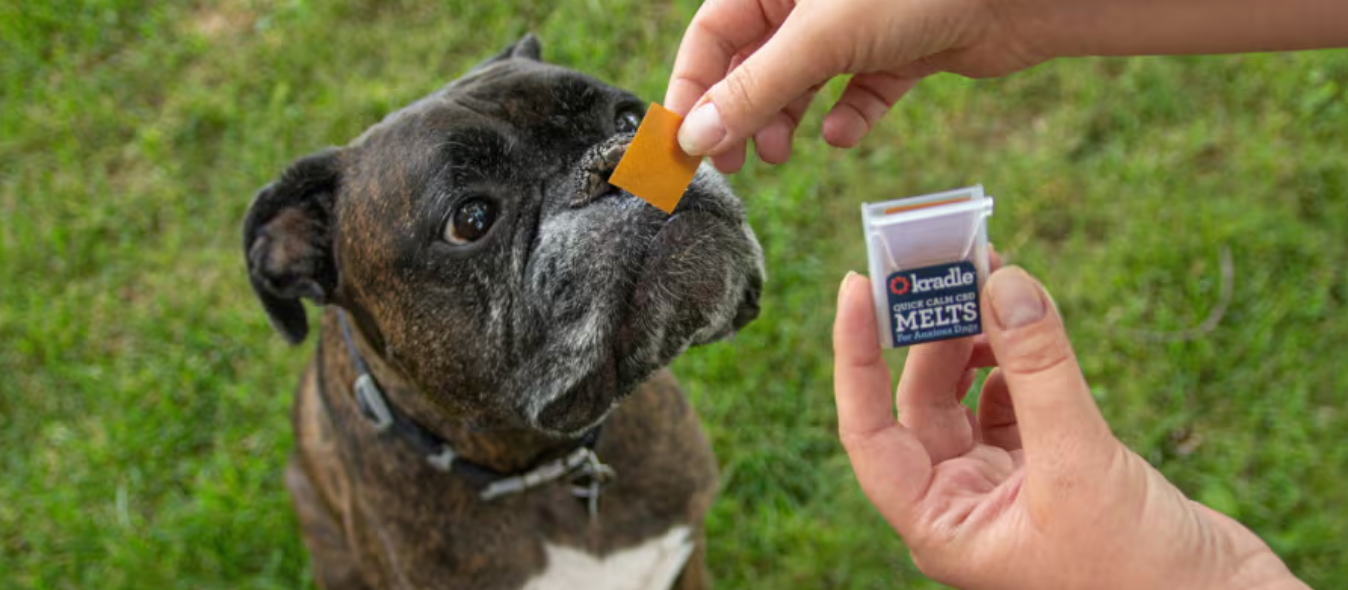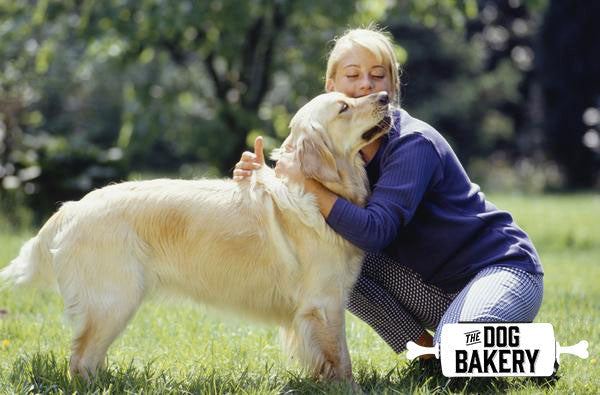 Featured Image by Dogs by Lori
Featured Image by Dogs by Lori
If you’ve got a dog at home - or more than one! - and have a baby on the way, you’re likely beginning to think about how your pup will react to having a new, tiny human added to the dynamic at home. It’s a fair and valid concern, as this new addition will greatly impact not only your own life but thusly the life of your pets! Or maybe you’ve already got young children at home and are recently beginning to think about ways to train your pet to better interact with your kids. Whatever the case, and whether you have the most calm, sweet of dogs or a more hyper or needy youngster in the home, there are several things you can do to prepare your pup for life with a baby or young child. We’ve rounded up some of the best advice available on raising kids with dogs and how best to train your dog to properly interact with your kids. Know that, like any training, reaching these goals will require diligence and consistency. If you’re able to start on some of these things before the child comes home, you’ll have things set in motion before your life becomes crazier than you ever imagined it could be!
 Photo by Nadir e Rosanna
Photo by Nadir e Rosanna
- Understand your dog. Vicki DeGruy wrote in the Dog Owner's Guide,“We need to realize that dogs are not little people in furry costumes. They don't think in the same way that we do. They look at the world around them with a different perspective. Most of their actions are instinctive. A dog will react to situations according to what his instincts tell him unless these instincts are overridden by the consistent training and socialization he needs to receive from his owner throughout his life. What can be done to prevent dogs from biting children? I feel that, first, it's essential to understand that almost any dog will bite under the right circumstances. Second, a dog is a dog, an animal whose behavior isn't the same as humans and can't always be predicted with 100 percent accuracy, no matter how friendly or reliable he is.” It’s easy to feel like your dog will just naturally love and tolerate your little one the same way that you do. But the reality is that you, especially if you’re a mom, are programmed to love and care for your child. It’s in your bones. Your dog doesn’t have the same emotions running through them and they don’t have the same relationship with your child that they have with you, who has raised and nurtured them. So while even you might feel mildly irritated when your screaming child runs over to you and hits or pulls at you in frustration, imagine how your dog will feel receiving the same attention! No matter how well you train and work with your pup, it’s important to work with your child too on how best to interact with dogs.
- Start small, with basic commands. Obedience training and socialization are absolute musts for a dog who'll be spending time with children. A dog without training to fall back on will act according to instincts only, and so dogs need to be taught to obey commands under all circumstances, no matter how distracting your life is about to become. Simple things like “sit,” “come” and “leave it” could greatly help you as you juggle both your human baby and your fur child. With your drastically changed routine, your dog’s schedule will change too, and out of necessity, they’ll get less of your time and attention. That’s why it’s so great if you can start working on all basic commands and get them down pat before the baby arrives. Consider a training class or personal trainer if time constraints are a concern.
 Photo by Christopher Polk/Getty
Photo by Christopher Polk/Getty
- Gradually introduce your dog to their new life. Four months before the baby arrives, gradually begin to introduce your dog to new experiences, sights, sounds and smells that they will likely encounter when you bring home a new child. Associate these new things with rewards, as this will help your dog learn to love life with a baby. One to two months before the baby arrives, anticipate the changes you’ll likely be making to your dog's daily routine and start to make those changes. If you plan to nap during the afternoon, start taking occasional afternoon naps. If you plan to feed or walk your dog at different times of the day, start moving to those new times early. Of course, life with a baby can be very inconsistent and hard to plan for. If your dog is Type A and used to a certain routine, you may consider preparing them for chaos by feeding them at all different times. For instance, if your dog starts standing over their food bowl at 7 AM, start feeding them at random times between 6 AM - 10 AM. If you’d prefer to keep an absolute regular schedule (or if you feel that doing otherwise would really affect your dog's happiness), consider getting an automatic feeder for their feedings and a dog walker for their walks. You can also look into dog daycare options for ways to give your dog a break and get them out of the house to socialize with other pups, something you will have less time to do once the baby arrives.
- Make new rules now. Although your instincts might tell you to lavish your dog with love and attention while there’s still time, this will only lead to a bigger letdown later on. Instead, start scheduling short play and cuddle sessions and gradually give them less attention at other times of the day. Schedule them randomly though so that your dog doesn’t learn to expect them at certain times. If you don’t want your dog on the furniture or bed after the baby arrives, introduce that new restriction ASAP. If your dog is a barker, that’s something you’ll want to get under control now, so that they aren’t waking the baby at naptime or during the night.
- Work on more advanced verbal commands. Once you’ve mastered some basics (sit, down, stay, leave it, coming when called), you can begin to work on more verbal commands that could come in use once the baby is home. Training your dog to wait at doors until you tell them to enter and teaching them to “settle” (lay down or retreat to a safe spot to lay down) can help dogs learn to control their impulses. Work with your dog on jumping on people, as this can become dangerous if you’re holding the baby. Even if your dog wasn’t originally crate trained, consider getting them one and teaching them to see it as their safe place. This way they have a cozy place of their own to relax when things get crazy at the house.
 Photo by Debbie L.
Photo by Debbie L.
- Master “go away.” It may sound harsh, but this is one of the most important verbal commands that you can train your dog. This will enable you to control their movements and interactions with your baby. You can use this cue to tell your dog to move away from the baby if they’re crawling towards them and the dog seems uncomfortable. It sounds funny, but many dogs wouldn’t have even realized that moving away was an option! If your dog learns that leaving is an option, they’ll never feel trapped in a stressful situation and therefore won’t be forced to express their anxiety by growling or snapping. So how do you do it? Show your pup a treat and say “go away,” tossing the treat four or five feet away from you. Repeat this sequence many times. Then, you can refrain from tossing the treat until your dog starts to move away. Say “go away” and act like you’re throwing the treat. When your dog moves in that direction, even slowly or just a little bit, say “yes!” and toss them the treat. After many repetitions, try waiting until your dog takes several steps away before you say “yes” and toss the treat.
- Train your dog with hand targeting. If your pup gets nervous or timid, teaching them to target your hand with their nose will give them something to do when they’re around the baby. This can make them feel comfortable and confident, as many dogs enjoy having a “job” and being stimulated.
- Read everything you can! We’re glad you visited us here, but don’t refrain from really exhausting your search on best ways to prep your dog for baby. In particular, the ASPCA has a host of great information that we think you’ll find helpful.
Still having issues? If your dog continues to have problems acclimating, showing any signs that set off alarm bells for you, be prepared to call in a trainer or behaviorist who are equipped to help you deal with the issue. While it’s our feeling that many issues can be corrected with hard work and patience, we understand that your child’s well being is of the utmost importance to you. If you begin to think that rehoming your pup is the best thing to do, consider speaking with loved ones in your family and friend group who may be able to take your pup, whether it’s just for a while or as a new forever home. This way, your dog will stay a part of your life. If this isn’t an option, you can reach out to local rescues about best next steps, as they will likely have resources you weren’t aware of.
Want tips on how to work with your kids to properly interact with your dog? Check out our reverse of this story here. In the comments below, tell us your own experiences and advice for introducing and acclimating dogs to life with a child at home!






